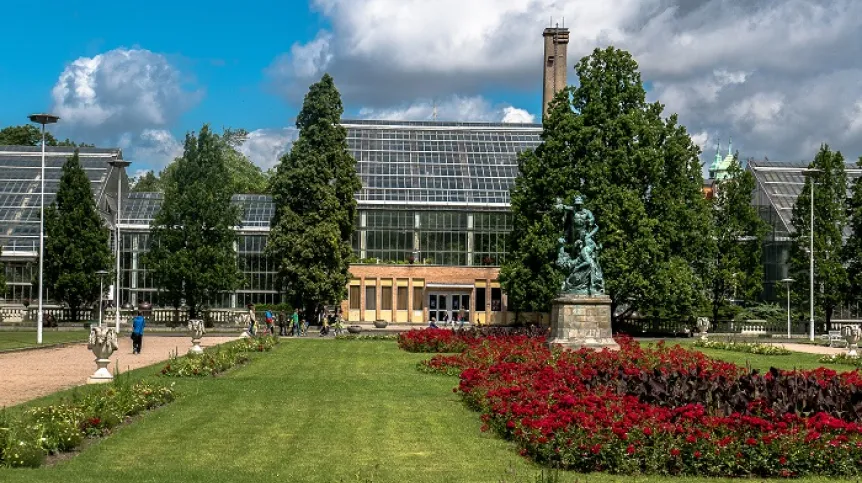
Large city parks with less mowing and leaves left on the ground for the winter, bee houses and more fruit trees in cities - these are some of the measures that support biodiversity in cities. Scientists argue that this also benefits residents.
Almost half of humans already live in urbanized areas. Forecasts say that by the middle of this century, as many as 70 percent of people will live in cities. Scientists emphasise that biodiversity is important in creating healthy and attractive urban spaces.
'To answer precisely what biodiversity is, first of all we should learn to study it', says Professor Piotr Tryjanowski from the Department of Zoology at the Poznań University of Life Sciences, quoted in a video prepared by the university.
That is why, as part of the international BIOVEINS project, scientists examined 36 green areas in Poznań, including the Citadel, the Warta River areas near the Piastowskie housing estate and the ecological site Traszki Ratajskie.
'This research shows how we can plan urban spaces to support the numbers of plant and animal species inhabiting the area', the naturalist says. In his opinion, 'by giving part of the city back to wild nature, we are also doing Poznań residents a favour'.
'The green and blue infrastructure in the city's fabric is indeed water - precisely this blueness and greenery, that is, what surrounds us, flower beds, parks, squares. This mutual interaction between the green and blue fabric is crucial for us, for our health and for our comfort of living in the city', Professor Tryjanowski says.
Together with Dr. Mikołaj Kaczmarski, Dr. Anna M. Kubicka, Dr. Łukasz Myczko, and veterinarian Patrycja Woszczyło, Professor Tryjanowski took a closer look at plants, insects, birds and amphibians in Poznań.
Their research shows that large city parks are crucial for biodiversity. 'Simply replacing trees is not the way to increasing biodiversity. Trees grow for a very long time, you have to manage this space differently', Tryjanowski says. He adds that this includes mowing less, leaving leaves on the ground for the winter, and creating flower beds with semi-wild plants.
In order to increase the habitats of wild bees in cities, it is crucial to increase the diversity of plants, especially those that will bloom at different times. Professor Tryjanowski recommends using wild bee houses, which are becoming increasingly popular in cities.
The researchers also draw attention to the population of amphibians that is shrinking at an alarming rate in cities. Research by scientists from Poznań shows that fruit trees are important for the survival of the green toad, for example. Plums attract insects that amphibians feed on. It turns out that toads that feed on fruit grow better and have a higher survival rate.
The BIOVEINS project research took place in Poznań and six other European cities: Tartu (Estonia), Antwerp (Belgium), Paris (France), Zurich (Switzerland), Lisbon and Almada (Portugal).
The scientists also searched for biodiversity among plants. A total of 255 areas of various sizes were examined in seven European cities. A total of 418 tree species were identified, both native and foreign ones. On average, the range of trees was 56 percent of the studied area.
The challenge in the project was to develop a method for measuring how air pollution affected ecosystems. The relationship between the physicochemically measured level of particulate matter and the condition of lichens was analysed. Theoretically, Paris and Antwerp fared the worst. 'Unfortunately, it turns out that in Poznań we have the poorest biological lichen community and at the same time the highest concentrations of particulate matter in leaves and tree bark', the university reports.
At nearly 600 sites, the scientists recorded 103 different bird species, 44 in Poznań alone, which was a fairly good result compared to other cities. More rare bird species occur in large parks and areas less frequently visited by people.
'The role of birds in cities is very important, they hunt insects and rodents, and by catching mainly weakened individuals they prevent the spread of diseases', says Professor Tryjanowski.
It also turns out that the infrastructure of tram tracks is important for birds. As many as 11 species of birds were observed during research near railway lines in Poznań, mainly corvids, such as the jackdaw and the rook. (PAP)
amk/ bar/
tr. RL













